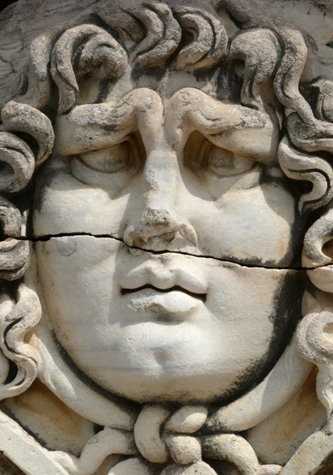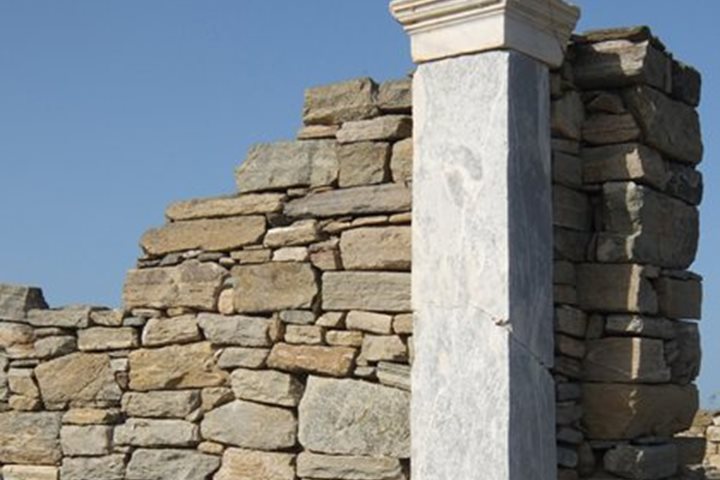After a huge day in perhaps the greatest Greco-Roman city at Ephesus, we all welcomed a good night’s sleep in the comfort and embrace of the legendary sailing yacht Sea Cloud. We had cruised very slowly overnight around the Greek island of Samos, and were eager to get to see this true hand-sailed square-rigger under sail. But . . . we were told that there would be not a breath of wind in the morning, so the captain and expedition leader changed the plan to go ashore in the morning and wait for the afternoon to set sail with the hope of an onshore sea breeze later in the day. Okay, but what archaeological site could rival the ruins of Ephesus?
The Temple of Apollo at Didyma was never part of a city, but rather a stand-alone sacred temple dedicated to the Greek God Apollo. Visitors walked the 17-km Sacred Way from the prosperous city of Miletus to consult the sacred oracle. This was the eastern counterpart to Delphi near Athens, and the temple was one of the most impressive structures in the ancient world. It was actually built and revised over a period of more than 500 years of worship to the God Apollo, beginning with the period of Alexander the Great in 334b.c. Changing governments and religious interpretations resulting in an evolution of architectural styles, and the Temple became one of the most interesting architectural studies of the ancient world. Whether it was the stone medusas, the gargantuan columns, or the enigmatic stone masons’ carvings, none of us could believe that we hadn’t heard of this site or temple, or that there was nobody else here.
Back on board we thought we sensed the first ripple of a very light breeze as Sea Cloud weighed anchor and cleared the Didim Marina. With a slowly developing light breeze, Captain Vladimir Pushkarev called the deck crew to sail stations and at 2:00 p.m. came the cry of “Hit the Rig!” With sail diagrams in hand and a play-by-play commentary worthy of the finest sports broadcasting, we watched 18 deck crew scurry aloft on the windward ratlines to untie the sail ties or gaskets, then hustle back down to the decks. “Haul sheets and set squares in order” came the call to the bosun, and we saw the sheet chains haul down the clew or corner of the sails. Halyards hauled the yards up and the bracing lines trimmed the yards. We then went forward to the bridge to see the jibs and staysails set, before going up to the fo’c’sle to take in the full experience. We were in awe.
We were only sailing at 2.2 knots, but that was amazing considering there was less than 8 knots of wind. We were all amazed that this experience of sailing on a hand-sailed square-rigger was still possible in the 21st century, and in such elegance and grace. Captain Pushkarev introduced his officers in the evening, and it was clear that everyone aboard the ship felt proud and privileged to be a part of the legendary Sea Cloud.









